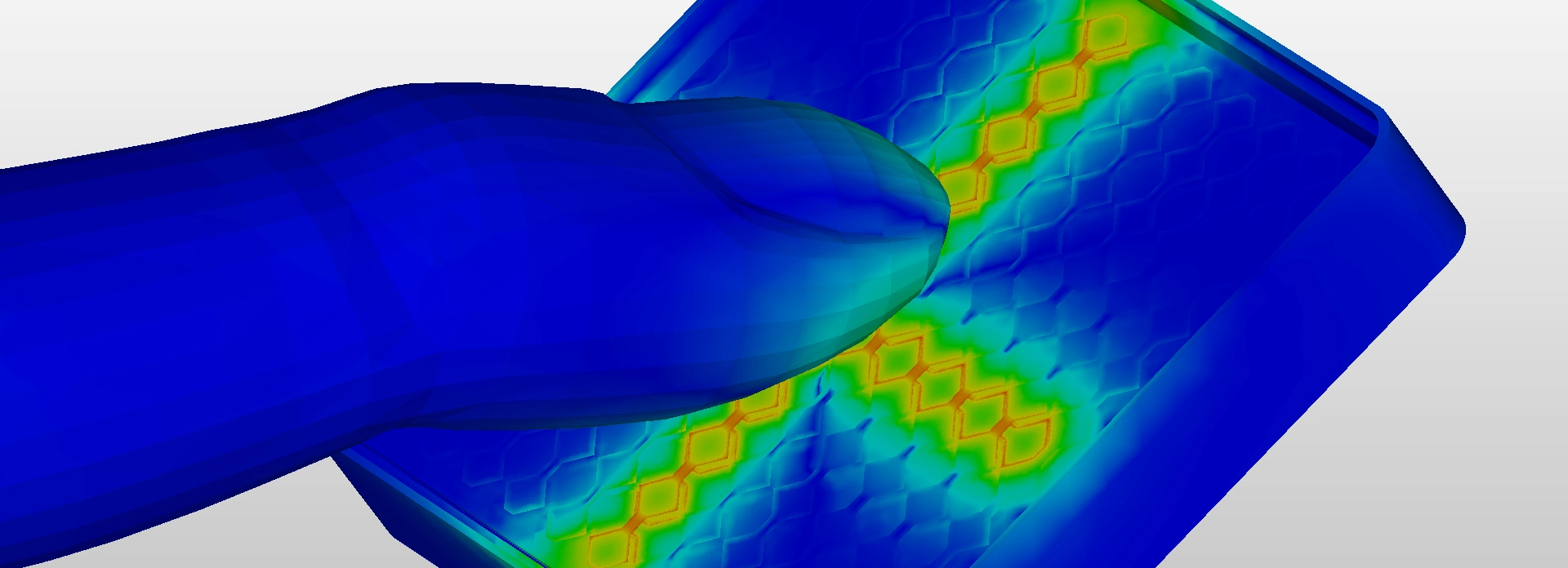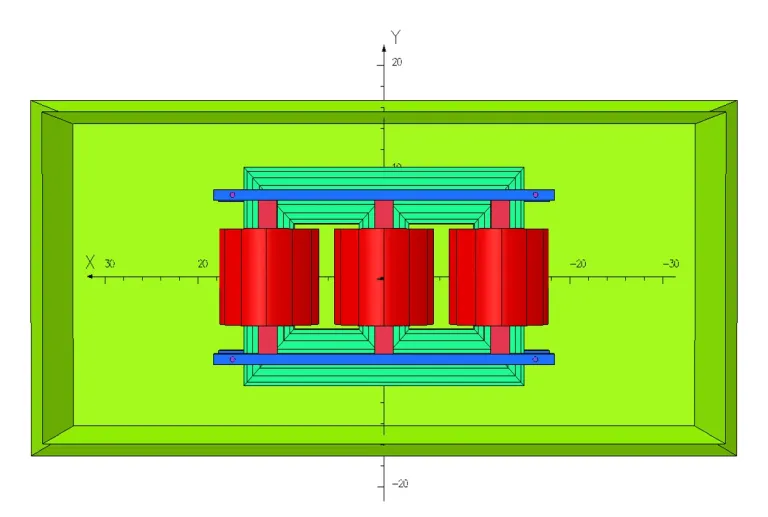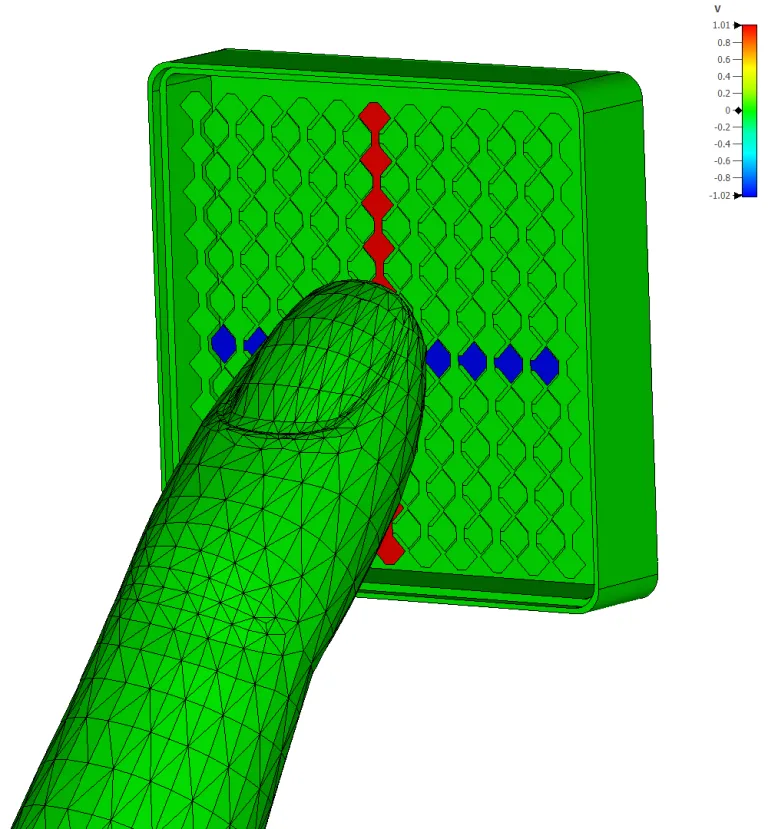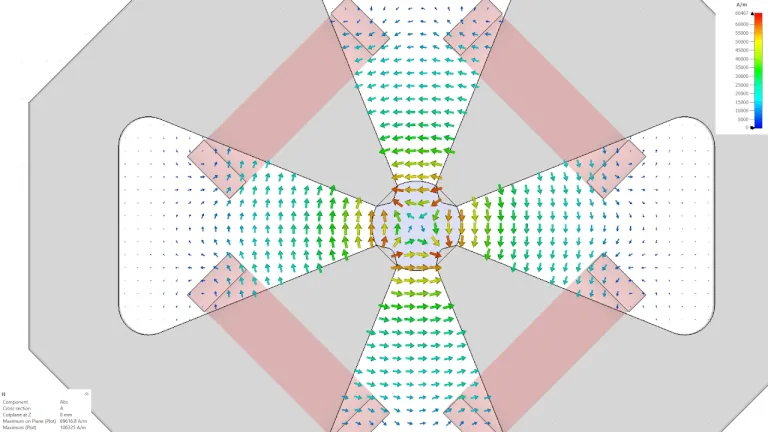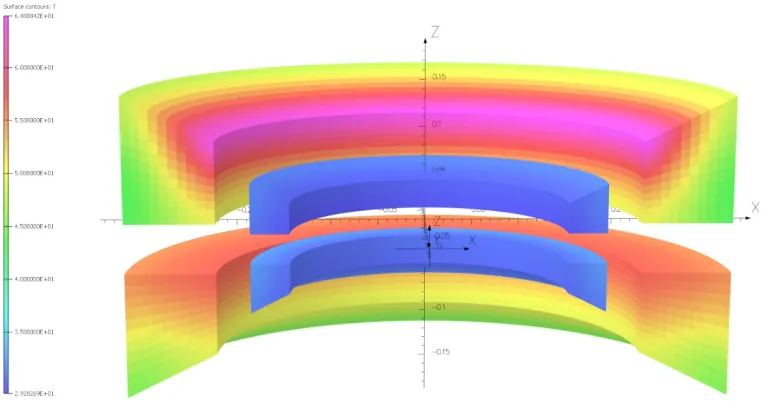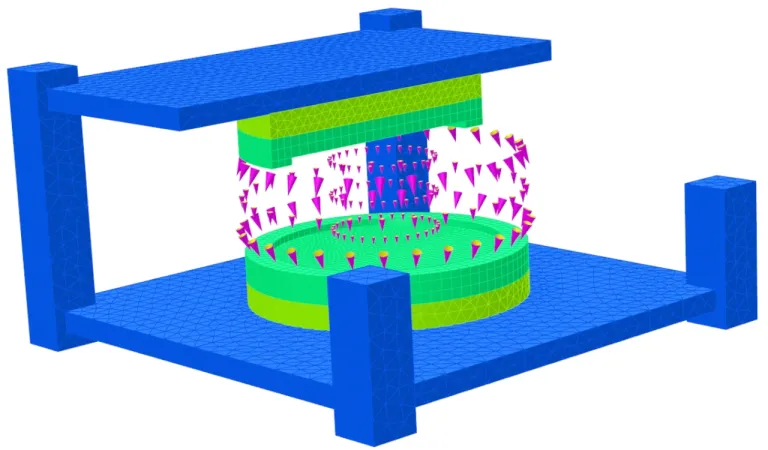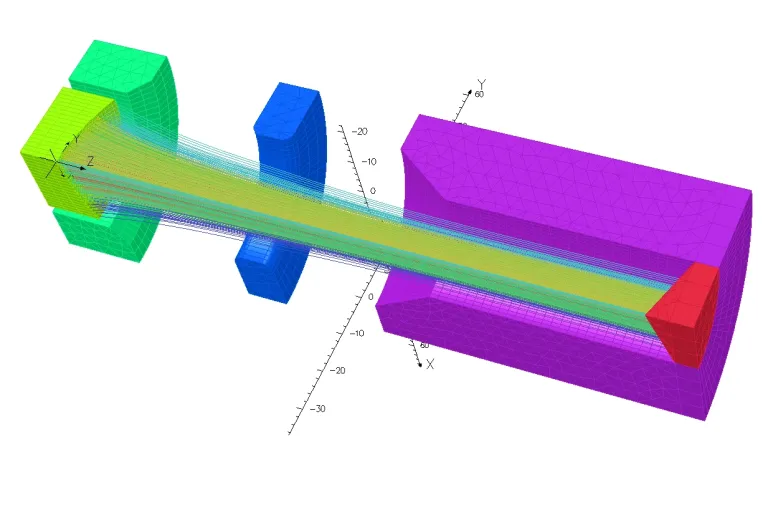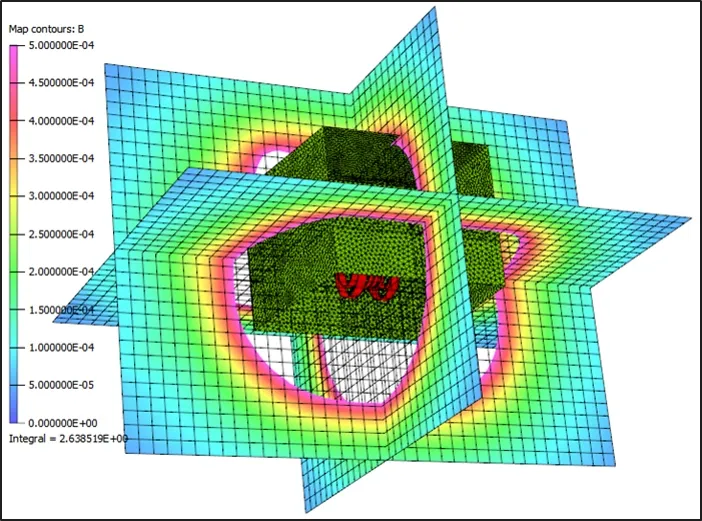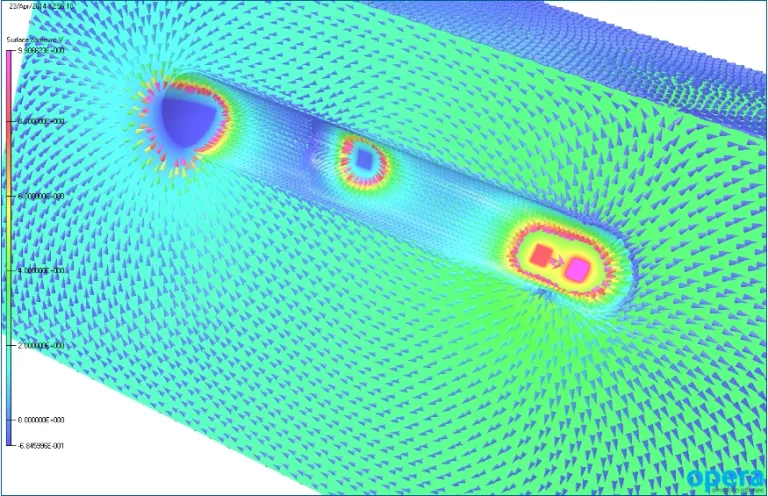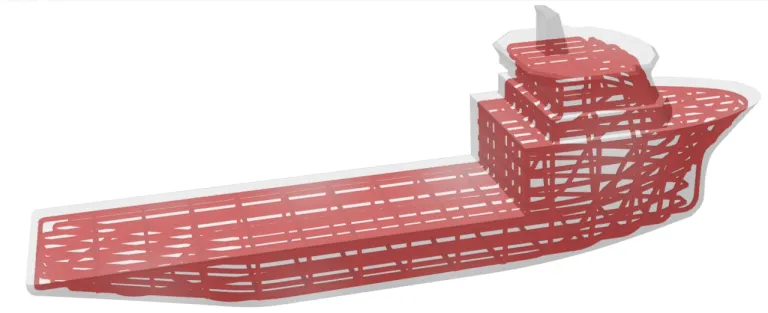Low-Frequency Electromagnetic Simulation
Electrostatic, Magnetostatic and Low Frequency Electromagnetic Field Simulation
Low Frequency and Static Simulation
The SIMULIA suite of specialized simulation tools for low-frequency (LF) and statics can tackle challenges including magnet design, high-voltage power device and electrical machine development. Industries including energy, transportation and mobility, marine and offshore, and industrial equipment use low-frequency simulation to design cutting-edge products and innovative systems.
The flexibility of SIMULIA’s tools in adapting to user requirements has seen it being used successfully for a wide range of applications in different industries. The accuracy they provide is of paramount importance when looking at field homogeneities of parts-per-million in medical devices or particle accelerators. Advanced material modeling and solution procedures enable detailed studies of devices containing permanent magnets or superconducting coils. Application-specific front-ends help guide the users through the complex task of simulating and optimizing high-efficiency, high-performance motors, generators and transformers.
Low-frequency simulation cuts development time, cost and risk in product development, and allows engineers to understand and optimize large, complex systems on the scale of generators, ships and particle accelerators.
The advanced hysteresis and demagnetization material modeling provides the required level of accuracy that allows designers and engineers to rely on virtual prototyping. It significantly reduces the time from design to production.
The strong coupling of electromagnetic effects with thermal and mechanical ones is a feature of most low frequency devices. SIMULIA provides best-in-class tools for the in-depth analysis of coupled physics behavior required to obtain a complete view of the systems’ performance and reliability.
Low Frequency Applications
- Power Generation and Transmission
- Sensor Design
- Magnet Design
- Superconducting Magnets
- MRI magnets
Power Generation and Transmission Simulation
Transformers, switchgears, bus bars and similar components must conduct large currents safely, without dangerous flashover or current leakage. Simulation shows fields and currents around components, including eddy currents, and heat generation, allowing designers to verify that high-power systems operate safely even under extreme loads.
Sensor Design
From capacitive touchscreens to non-destructive testing, many sensors use static or low-frequency fields to detect and measure targets. Simulation can analyze and optimize the response of sensors to different test targets, even in the presence of interference or soiling.
Magnet Design
Magnets form the basis of many precision instruments in fields such as medical imaging, particle research and material science. Simulation provides standard magnet KPIs including:
- Field distribution
- Field homogeneity and gradients
- Fourier analysis coefficients
- Associated Legendre polynomial coefficients
- Peak fields on coils and shielding effectiveness
- Multiphysics results including forces, heating and stress
Superconducting Magnet Simulation
Superconducting magnets can produce strong magnetic fields efficiently, but their operation relies on the presence of cryogenic coolant. If the magnet fails, it can undergo a violent “quench” as the coolant boils and the superconductor transitions to resistive. Simulation can model superconducting magnet performance, including quench propagation.
MRI Magnet Design
Magnetic resonance imaging (MRI) requires powerful magnets with precisely controlled magnetic fields. SIMULIA simulation tools have the accuracy needed to design MRI magnets. Our solvers can combine static and LF magnetic field analysis with radio frequency (RF) coil and patient safety simulations. Links to spin simulation tools complete the MRI design workflow.
- Particle Beam Optics
- Magnetic Shielding
- Cathodic Protection
- Magnetic Signature
Particle Beam Optics Simulation
Magnetic lenses and other beam-directing magnets are a crucial part of particle accelerators. Particle tracking simulation can model the movement of charged particles through magnetic fields to allow scientists to design and optimize accelerator components. For more information, see Particle Dynamics.
Magnetic Shielding Simulation
Stray magnetic fields can cause electromagnetic compatibility and interference (EMC/EMI) issues, including data loss in memory. They can also damage other electronic equipment, and cause risk to people with implanted pacemakers. With simulation, users can design magnetic shielding for permanent magnets and induction coils (for example, wireless electric vehicle charging) to safely contain the magnetic fields.
Cathodic Protection Simulation
To protect against corrosion from salt water, ocean-based equipment such as ships, oil rigs and offshore wind turbines use cathodic protection. In cathodic protection, a sacrificial or impressed current anode prevents the oxidation of the metal body. Simulation calculates the potential across the vessel to analyze the performance of cathodic protection systems and help optimize anode placement.
Magnetic Signature and Degaussing Simulation
Mitigation of electric and magnetic field signatures is an important part of the design process for a naval vessel. SIMULIA’s LF solver technology has been widely used for many years as a simulation tool for both undegaussed and degaussed signature assessment. It shows excellent accuracy in validation exercises and flexibility in optimizing positions of degaussing coils.
Start Your Journey
Explore the technological advancements, innovative methodologies, and evolving industry demands that are reshaping the world of Low frequency Electromagnetics Simulation. Stay a step ahead with SIMULIA. Discover now.
FAQ About Magnetic Field Simulation
A magnetic field is typically visualized using various plots, such as vector or contour plots. Vector plots represent the direction and strength of the magnetic field at different points in space, while contour plots visualize scalar quantities.
Field simulation can calculate the field quantities in all directions of the coordinate system on the grid used for discretization. A vector plot can visualize the direction and strength of the magnetic field at every point.
The right-hand rule is a simple way to visualize the direction of the Lorentz force. Start by holding your thumb, index and middle finger of your right hand perpendicular to each other, just like the axes of a coordinate system. If your thumb points in the direction of the current, and your index finger in the direction of the magnetic field, then your middle finger points in the direction the Lorentz force acts on the conductor. You can also start with your index finger for the current, middle finger for the field and thumb for the force.
Also Discover
Learn What SIMULIA Can Do for You
Speak with a SIMULIA expert to learn how our solutions enable seamless collaboration and sustainable innovation at organizations of every size.
Get Started
Courses and classes are available for students, academia, professionals and companies. Find the right SIMULIA training for you.
Get Help
Find information on software & hardware certification, software downloads, user documentation, support contact and services offering
